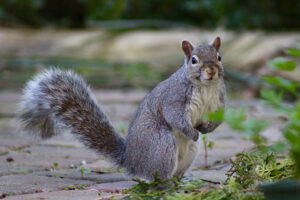The world’s wildlife species are dying out at an alarming pace, and the animal residents of Canada are no exception. Experts surmise that today, about half of the country’s wildlife species are at risk of disappearing completely. The rate is alarming with an average loss of 83% being recording over the years 1970-2014. To make matters worse, the decline in numbers for protected species has increased dramatically since the country implemented the Species at Risk Act to remedy the situation.

Less common urban animals such as the fox, are in decline.
The Cause
The causes for declining animal population are essentially the same in Canada as in other countries – habitat loss and human factors such as pollution. Of course, habitat loss refers to the fact that the spaces once occupied solely by animals have been turned into commercial and residential communities for people.
For some species though, habitat loss has little to no impact on their survival. This is because they adapt quickly to new surroundings. In Canada, these animals are found in cities and towns coexisting with human beings. Some of these survivalist species include raccoons, squirrels, and skunks, all of which have a global reputation for adapting easily to city life. As a result, they can be seen scurrying around busy streets in urban areas with little to no difficulty.
In Search of the Cure
To find the solution to the problem of dwindling wildlife numbers, we must identify the root cause. Since for many species, it is not really the expansion of human settlements that poses the threat, the spotlight must be shifted to the other factors. The impact of pollution and other spinoff effects of industrial growth and function, as well as the way people treat wildlife species, must be taken into consideration. Additionally, climate change, which can be traced back to human behaviour has to be factored in as a chief contributor to the demise of Canada’s wildlife population.

Adaptable animals such as the squirrel are finding new ways to adapt and survive.
Animal Control Matters
Whether animals have adapted to human encroachment or not, situations of undesirable presence of wildlife in human domains are likely to occur. This creates the need for wildlife animal removal services.
Undoubtedly, humane animal control services can play a crucial role in reversing or curtailing the alarming decline in numbers and preserving the species. Through humane animal control services, wildlife that finds themselves caught in human surroundings can be removed without being harmed. These services also ensure that the offspring of the animals (in the case of nesting animals) are not endangered. This is starkly different from traditional animal control services that use pretty much any means necessary to remove and control animals. Often these harsher methods would include the use of poisonous substances and violent attacks on the animals.
Today, the situation in Canada is a serious one with impending doom facing large numbers of animals in the wildlife community. This, in turn, could lead to damaged or lost ecosystems and eventually the evolution of a new environment that may make human survival difficult or impossible. Clearly, humane animal control services represents one of the answers to this dilemma.
Jump to: Canada’s Wildlife Species Experiencing a Decline (Part 1 of 2)




